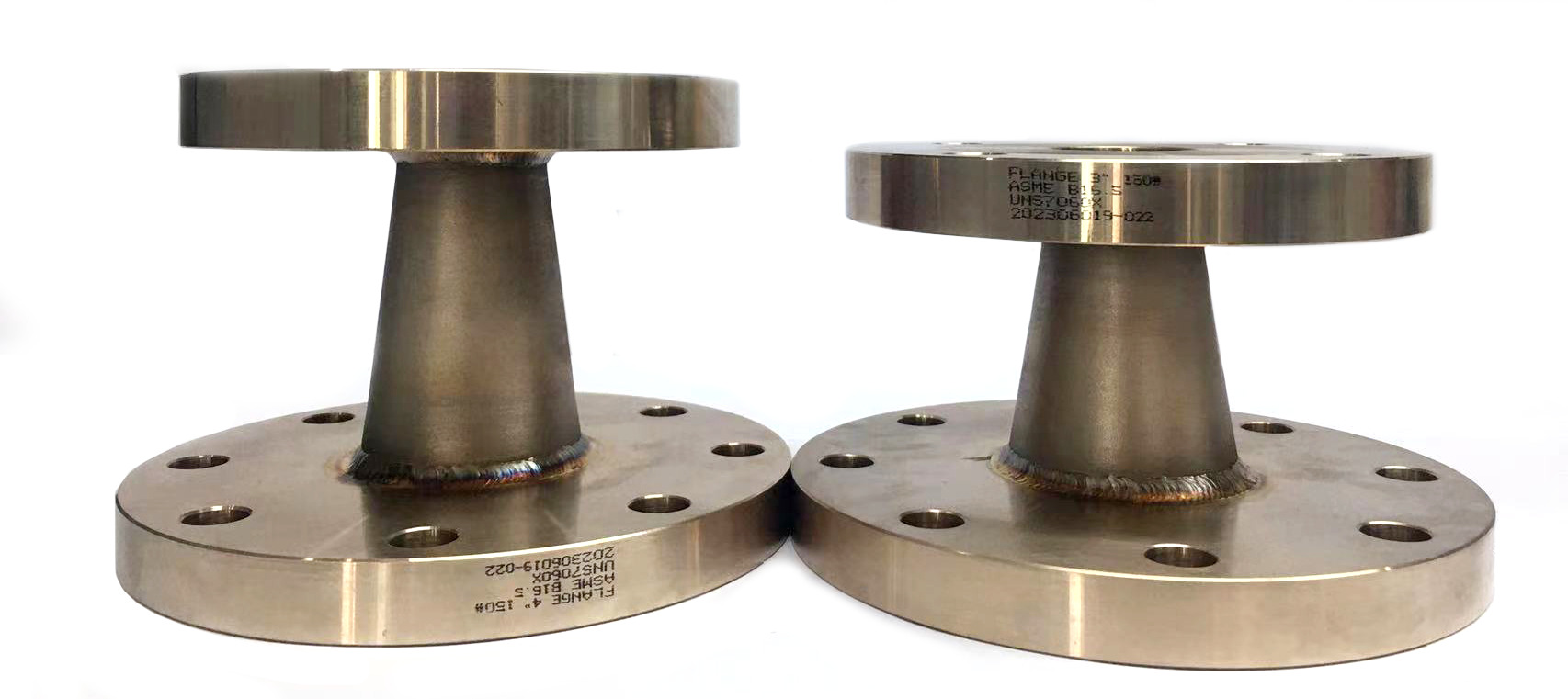Share this
Alloy flange is a type of flange pipe fitting with a hollow cross-section and no seams around the periphery. Alloy flanges, featuring a hollow cross-section, are extensively used in pipelines for transporting fluids such as oil, natural gas, gas, water, and certain solid materials. When compared to solid steel materials like round steel, alloy flanges are lighter in weight with the same bending and torsional strength, making them an economical cross-sectional steel material. They find widespread applications in manufacturing structural components and mechanical parts, such as oil drilling rods, automobile drive shafts, bicycle frames, and steel scaffolding used in construction.
In the process of using alloy flanges, attention should be paid to enhancing the toughness, impact resistance, and wear resistance of the pipe lining to ensure safety and extend the service life. Materials transported through alloy flanges can withstand significant pressure, especially in close-distance and high-pressure conveyance.
Formation Process Advantages of Alloy Flanges:
1. No Need for Pipe Blanks:
There is no need for pipe blanks as raw materials, saving costs for pipe manufacturing equipment and molds. It allows for the production of high-pressure alloy flanges with arbitrarily large diameters and relatively thin walls.
2. Plate or Flexible Surface Blanks:
The blanks for processing alloy flanges are flat or can be flexibly shaped, simplifying the cutting process and ensuring precision. Assembly and welding are convenient, and the material can be easily controlled during processing.
3. Shortened Manufacturing Cycle and Reduced Costs:
Due to the above reasons, the manufacturing cycle of high-pressure alloy flanges can be shortened, leading to a significant reduction in production costs. It is particularly suitable for on-site processing of high-pressure alloy flanges as no specialized equipment is required.
Quality Inspection of Alloy Flanges:
Alloy flanges undergo inspection based on specified items and requirements in technical documents. In the case of unsatisfactory mechanical properties, repeated heat treatment is possible, but the number of repeated quenching or solid solution treatments generally does not exceed two times. The original records of heat treatment should be properly preserved for reference.
Cleaning and Correction of Alloy Flanges:
Cleaning methods for alloy flanges include alkali washing, water-soluble cleaning agents, chlorine solvent sandblasting, shot blasting, etc., depending on the requirements and surface conditions. Acid washing is generally not used for cleaning alloy flanges.
Correction of alloy flanges involves using static loads for correction, and local hammering is generally not advisable. After correction, stress relief annealing should be performed at a temperature lower than the original tempering temperature.
Neck Flanges:
Neck flanges, also known as raised face flanges, are components that connect shafts to each other, used for connecting the ends of pipes. They are also employed in flanges at equipment inlets and outlets, facilitating the connection between two pieces of equipment, such as gearbox flanges.
The widespread use of alloy flanges in engineering and manufacturing underscores their importance as critical components in pipeline connections, offering superior performance and manufacturing advantages.

